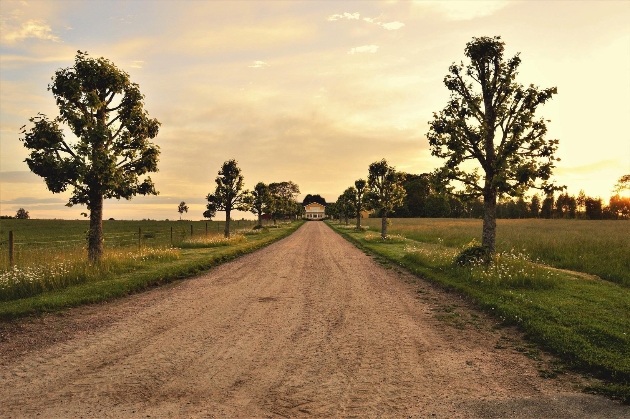Here in the Okanagan valley we get a decent amount of snow. You know this because you spent the winter plowing it and now you’re looking at your gravel driveway and feeling a little annoyed by it. The water runs directly down the driveway where the ruts are and not into the ditch, the pot holes from last season were not too bad but now they’ve almost doubled in size, you know that there is supposed to be a ‘crown’ in the road but your not really sure what that means, and when you go up the hill the washboarding is so bad you have to put your coffee down and hold onto the wheel with both hands!
So you decide that’s it! “I’m going to fix my driveway this weekend. How tough can it be?” Just need to put some gravel into the potholes, borrow the neighbors tractor and smooth it all out. Easy peasy.
Unfortunately this won’t actually correct the issue though. How many times have you driven down a road where they patched the asphalt but it just comes undone and they keep patching it before they decide to actually repave it. These little driveway patches lead to more patching and keep repeating until you decide to invest and correct the actual problem.
Now that we understand the symptoms of a poor driveway and the typical ways people try to fix them, what should we do next? Luckily, there are a couple local experts here in the Vernon, BC area. I will explain step by step what we do and why we do it as well as tips for a proper driveway repair.
Step 1. Hop on the Google and type in BC One Call.
This is a system that helps save you panic, embarrassment, and money. What am I talking about? This system will email you some basic maps and information about your residence. It’ll help tell you where your natural gas, water, and other underground utilities are entering your property and going into your house. Why is this important? For example a gas line might actually be buried in your driveway unknown to you. And you start digging around to clean out some ditches or maybe dig out a soft section of your driveway and bam! You hit a gas line that was completely avoidable had you not checked…ask us how we know… that’s a story for another day.
Step 2. Our first step would be to identify your problematic areas and correct those by reshaping your current gravel driveway.
This looks like cutting out those ruts down the middle of the road and start rebuilding the crown (center of the driveway) and actually scratching out those potholes flat. We ensure the driveway crown sheds the water off of the driveway and into the ditch where the water should be travelling. Once this is all complete we compact the driveway and this will solve any pothole issues as well help prevent shifts and change of your subgrade due to rain, freezing/thawing, and vehicle traffic.
Step 3. Now we are ready to bring in some new gravel.
Fancy! The truck comes in and typically tries to dump the gravel out as he’s driving. This actually helps the operator spread the gravel a little easier and speed things up. When your getting this work done watch to see how good the drivers skills are. Some of them are amazing at this and its really a pleasure to watch! Dirt Nerd typically adds 2-4″ thick of new gravel especially in those problem areas of your driveway. Once the final layer of gravel has been spread, it’s time for the next step of gravel driveway installation: crowning the driveway with the new gravel material.This part is really important to ensure the longevity of your driveway. Getting the water off of your driveway and into your ditch quickly is the best way to help. This will then be compacted again for a properly structured driveway.
Step 4. You thought we were done? Nope.
We can’t forget about the ditches! If you’re sending water into the ditch there is a few things to consider. Is there anything completely blocking it so it pushes water back onto your driveway? Is your driveway steep and when it rains the water hits your ditch but starts washing it right out? Maybe you actually need some rocks or barriers to actually slow down the water. Most driveways have one or two culverts that help bridge the gap onto the main road. Is yours plugged or crushed at the opening? Water is a necessity but we need to help it travel where we want it or it’ll choose it for us and typically its the path of least resistance.
If you’re in an area where there is a lot of ground water or springs that pop up you might consider “armouring” your ditch with larger rock to prevent washing. When a heavy rain hits all the work you’ve completed and starts disappearing your driveway it’s a bad day.
Lots to think about right?
Hopefully this helps you with some basic steps to do this yourself. Or if you’re in the North Okanagan and would like a contractor such as Dirt Nerd to come give you an honest opinion, a seamless process, and an incredible result. Click below to get a no obligation, no pressure quote.
